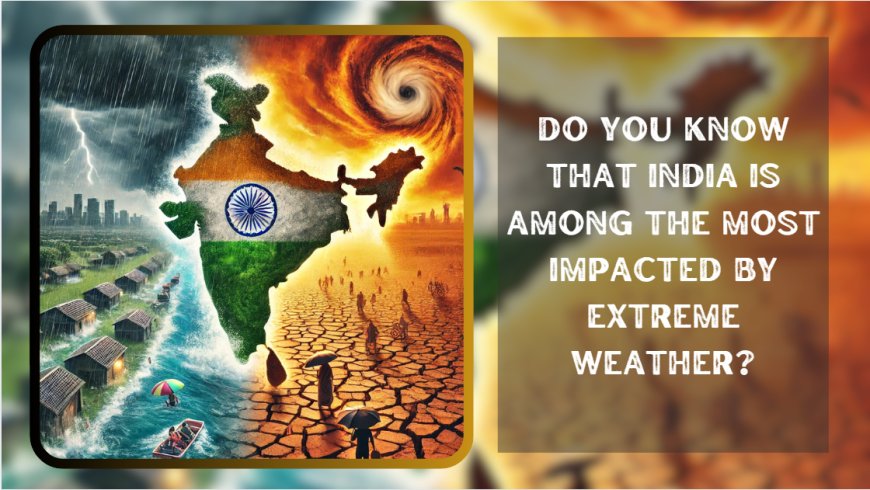Do You Know That India Is Among the Most Impacted by Extreme Weather?
A Silent Threat: Climate Change and Its Impact on India

India (12 February, 2025): For decades, India has been battling the harsh realities of climate change. From devastating floods in 1993, 1998, and 2013 to scorching heatwaves in 2002, 2003, and 2015, extreme weather events have left a deep mark on the nation. According to the Climate Risk Index 2025, India ranks 6th among the most affected countries due to climate-related disasters.
The Heavy Toll of Extreme Weather
Climate change has not only claimed lives but has also caused severe economic losses. India has faced over 400 extreme weather events in the last 30 years, leading to damages worth $180 billion and nearly 80,000 deaths. The country has witnessed powerful cyclones like the Gujarat cyclone (1998), Odisha cyclone (1999), Cyclone Hudhud (2014), and Cyclone Amphan (2020), each leaving destruction in its wake.
A Look at India’s Deadliest Disasters
One of the most tragic events was the Uttarakhand floods in 2013, which wiped out entire towns and claimed thousands of lives. Similarly, heatwaves have become more intense, with temperatures crossing 50°C in several states, leading to heat-related deaths and severe droughts. These disasters are a grim reminder that climate change is no longer a distant threat but an immediate crisis.
Global South: The Worst Sufferers
Countries in the Global South, including India, China, Pakistan, and the Philippines, have been among the hardest hit by climate change. These nations frequently face cyclones, floods, and extreme temperatures, yet they receive inadequate financial support to combat the crisis. The report highlights that high-income countries must provide greater assistance to nations struggling with extreme weather.
The Economic and Human Cost
Globally, extreme weather events have led to nearly 800,000 deaths and caused damages worth $4.2 trillion in the last three decades. India, despite its rapid development, continues to struggle with the dual challenge of climate change and economic recovery. Many farmers, small businesses, and daily wage earners suffer the most, as unpredictable weather conditions disrupt their livelihoods.
The Call for Stronger Climate Action
The climate crisis is no longer just an environmental issue—it is a global security risk. Experts believe that failing to act now will only lead to larger disasters in the future. The Climate Risk Index urges developed nations to step up their efforts in providing climate finance, ensuring that vulnerable countries like India can prepare for and mitigate the effects of extreme weather.
Will COP Meetings Bring Change?
While climate conferences such as COP29 in Baku have discussed climate finance, the commitments made so far remain insufficient. The report suggests that a minimum of $300 billion annually is needed to combat climate change, yet many nations are falling short in fulfilling their pledges. Without strong global cooperation, the future remains uncertain.
The Road Ahead for India
India has been taking steps to combat climate change, from promoting renewable energy to improving disaster preparedness. However, the scale of the problem requires a much stronger approach. With rising sea levels, extreme heat, and erratic rainfall patterns, the country must prioritize sustainable development and climate adaptation strategies.
A Global Responsibility
Climate change is not just India’s problem—it is a global crisis that requires urgent action. The data from the Climate Risk Index serves as a wake-up call for all nations to come together and address this growing threat. The longer we delay action, the more devastating the consequences will be for future generations.

 Aryan K
Aryan K 





